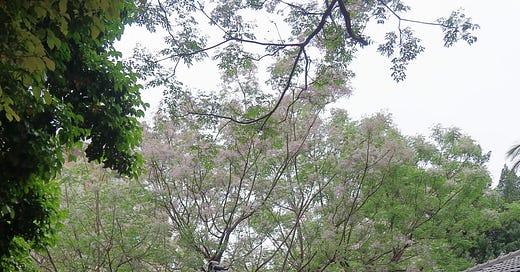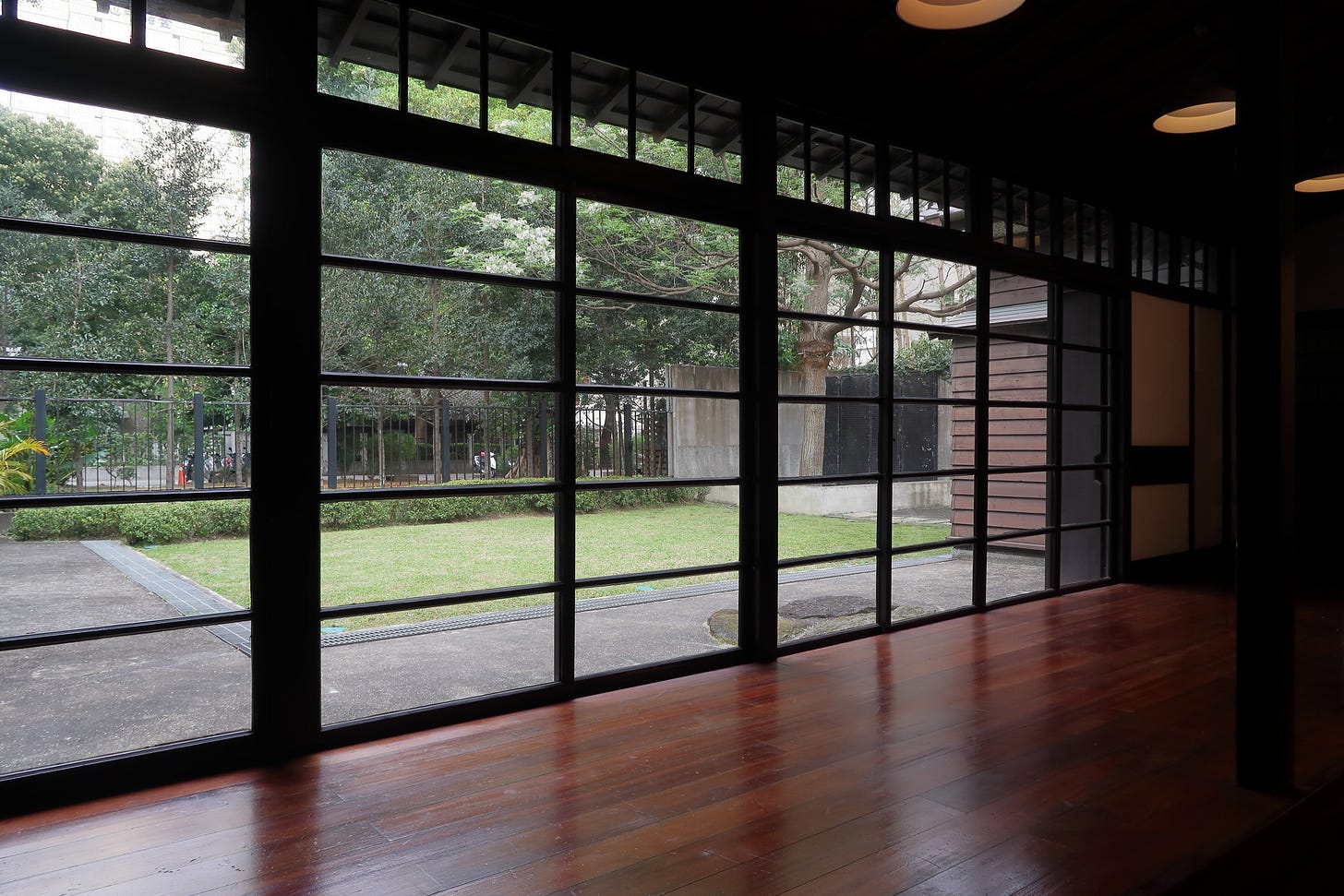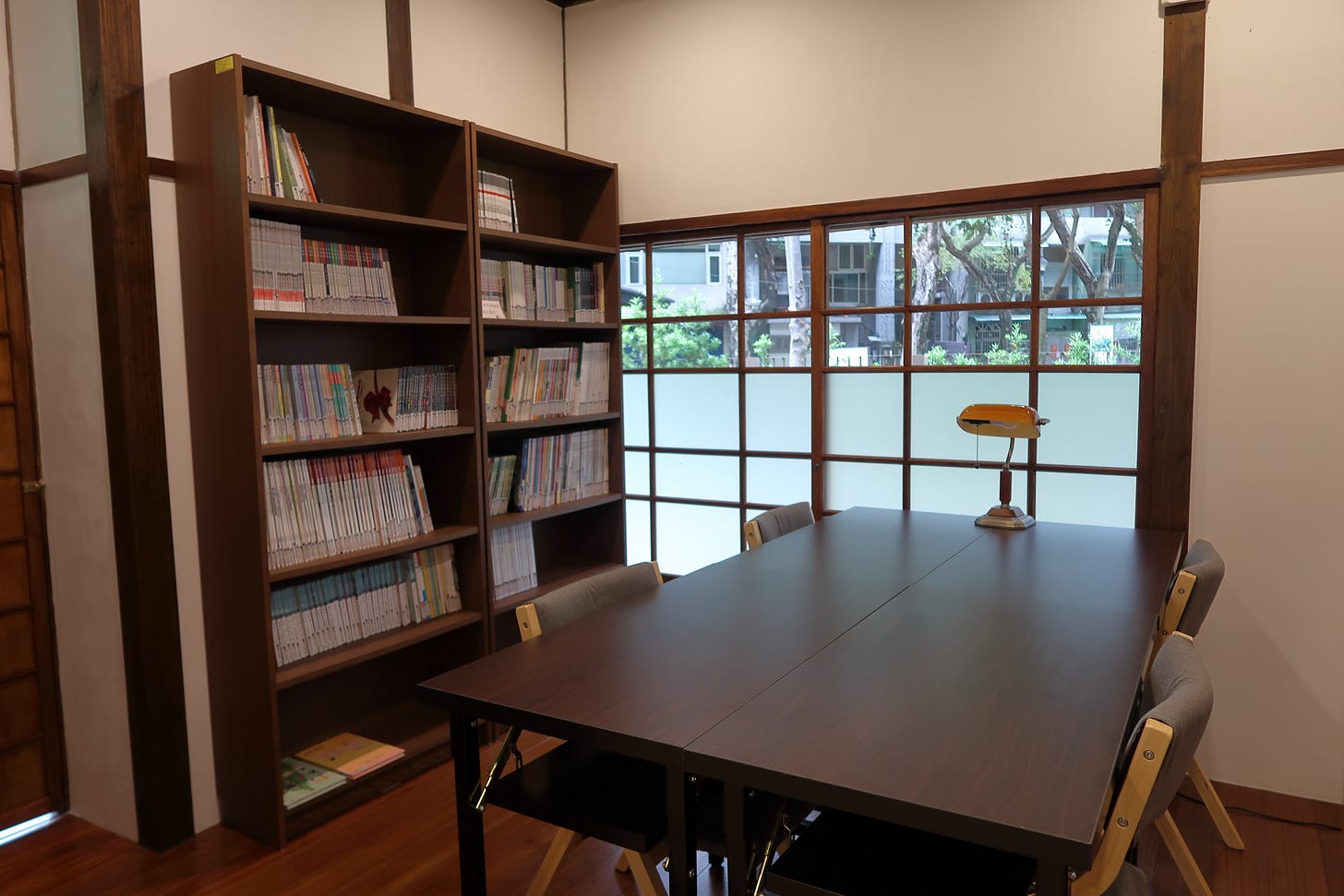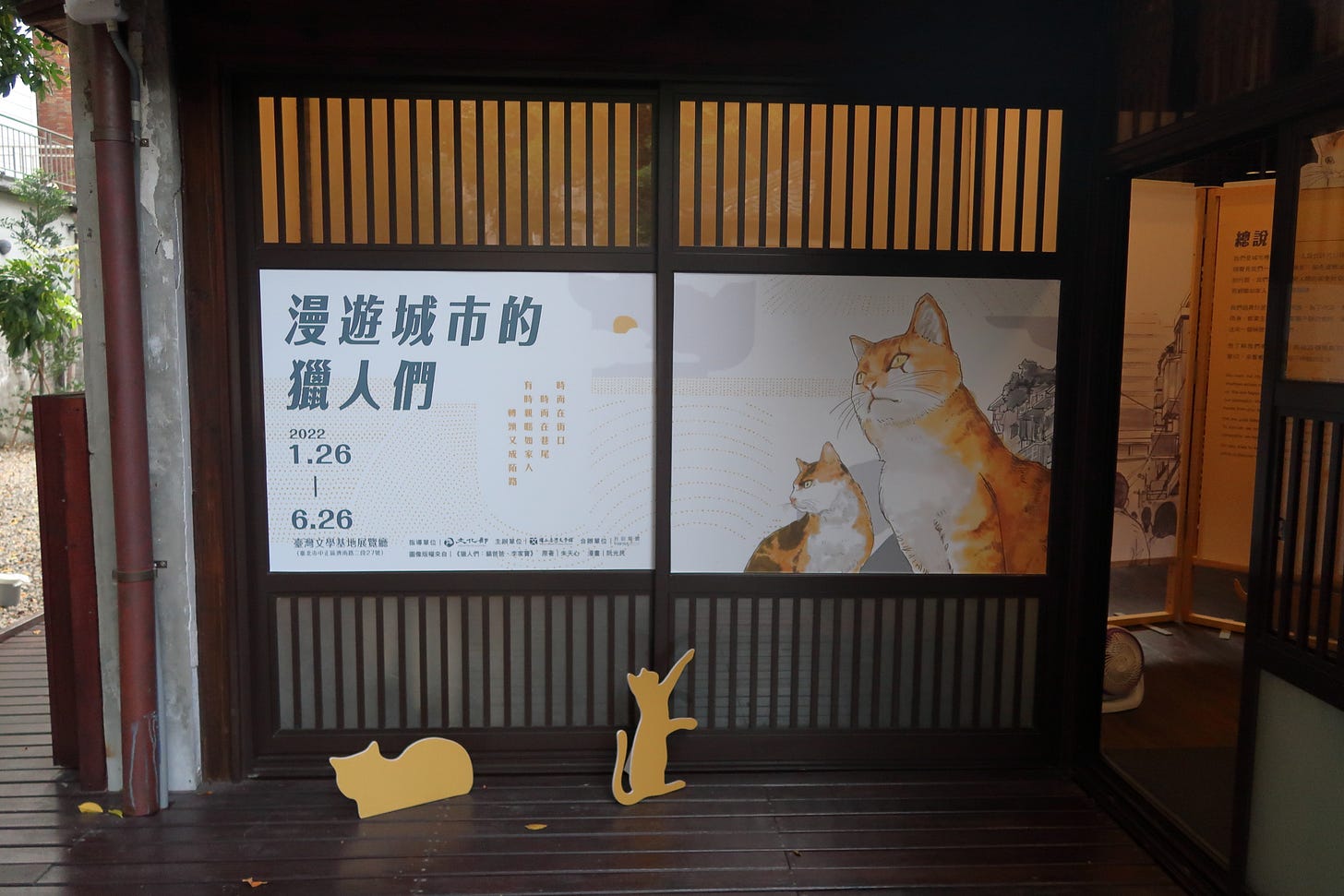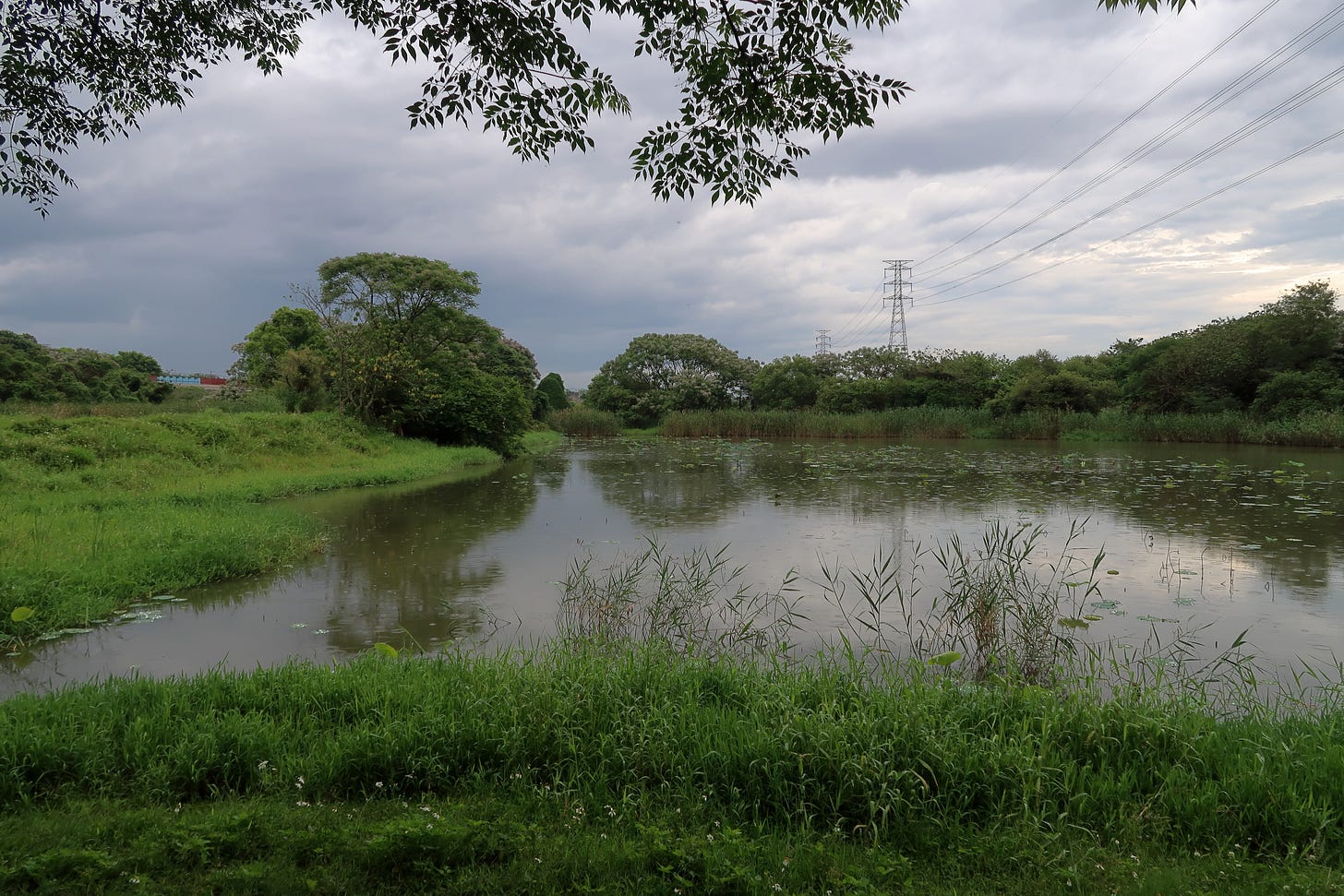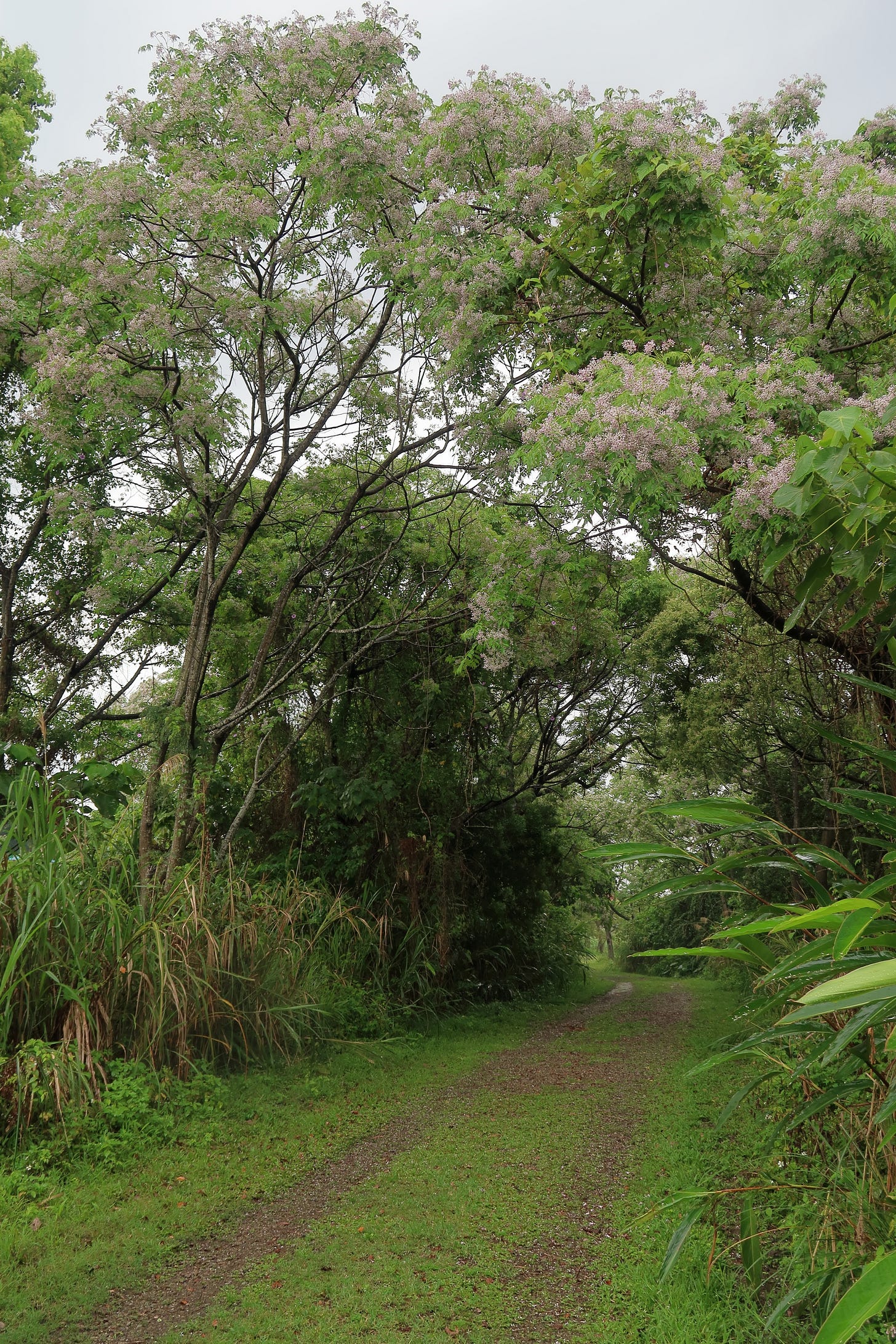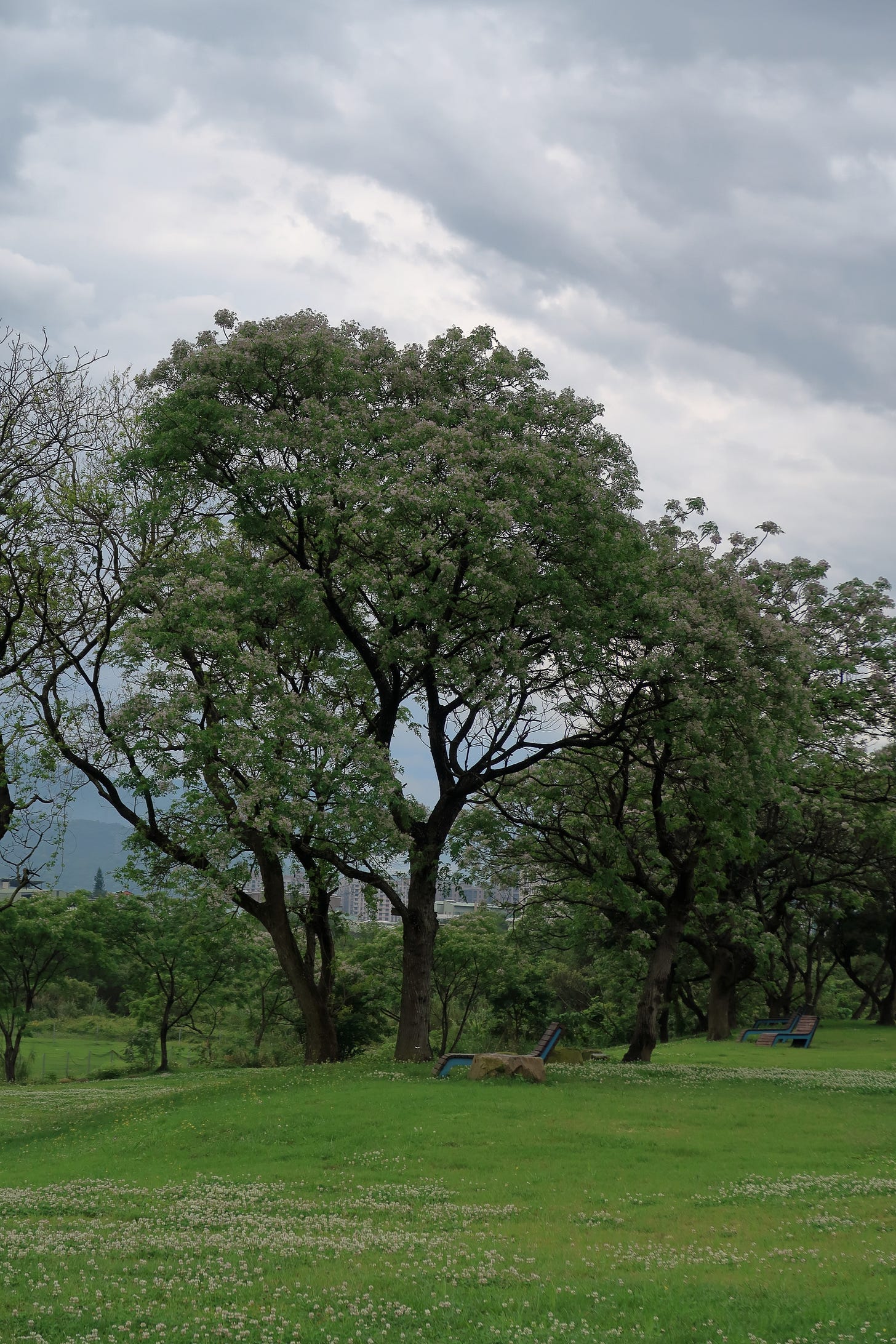A Place for Reading in the City: Taiwan Literature Base
Let's take a look at the Taiwan Literature Base, a quiet corner for reading in the city
Greetings at the end of March, the end of the first quarter in 2022. Last time I said that I would write about topics related to Taiwanese literature, but let’s take a detour and take a look at the Taiwan Literature Base. It would be nice to go out while it is not rainy to visit this quiet corner in the city.
In the second half, I share some interesting activities I participated in recently: a series of activities of bird census of Tamsui River in spring. There are still more than two weeks of activities to come, please join us!
《翻譯寫作的文字風景》是中英文雙語電子報。如果只想收到中文版,請到網站右上角的「My Account」內進行操作,也可以直接回覆這封E-mail或寫信到transcreation@substack.com,由我幫忙更改設定。再次感謝你的訂閱支持!
這篇文章的中文版在這裡。
On a sunny rainy afternoon in March, I went to the Taiwan Literature Base, a place I have longed to visit for a long time. Before I entered the gate, a sense of poetry was already in place: the elegant trees around the houses were in full blossom; as a gust of wind blew, the petals drifted down, like soft raindrops flying in the air.
I learned from the volunteers that these are bead trees (Melia azedarach), and the volunteers kept the fruits from last year for visitors’ review. It was interesting how I seemed to notice the bead trees everywhere after being able to identify them, especially as they are in blossom in this season: I saw a lot of beautiful bead trees the other day when I took a walk in National Taipei University and went biking along the river.
The Taiwan Literature Base is a Japanese-era dormitory complex, whose renovation was finished last year. Located not far from the MRT Zhongxiao Xinsheng Station and near Qidong Street, these quiet Japanese-era dorm houses emerge from around the corner after just a few blocks of walk from the lively commercial area. The predecessor of the Taiwan Literature Base, “Qidong Poetry House,” is one of the historic buildings renovated and restored earlier in 2011, and opened and operated by the National Museum of Taiwan Literature in 2014.
Now the entire dormitory complex has been restored, and the historic buildings preserved as a complex (in contrast to where only a single building is preserved) allow visitors to be better immersed in the atmosphere of old times. The Taiwan Literature Base is not quite a museum; the design of the space intends to invite people to stay and read, which is probably a relatively new approach? The Taiwan Literature Base, open to the public free of charge, welcomes everyone to pay a visit.
I was drawn to this place due to an encounter with the Qidong Park years ago. I used to walk in Taipei very often. When heading from one appointment to the next, I often chose to walk to the destination if it was only 2 or 3 kilometers away, partly for saving money, partly for knowing the city better. One time I happened to pass by the Qidong Park during this kind of walking and moving. I had about 10 minutes to linger, and I sat down in the park for a while, resting and admiring the surprisingly quiet atmosphere just a few steps away from Zhongxiao East Road. I noticed many beautiful old houses nearby, and found on the map that the old Japanese house was called “Qidong Poetry House.” I did not have time to go inside, and I told myself to visit this place again some other time. Little did I expect that the next visit I paid would be many years from the first.
I asked a volunteer how this place was transformed from the Qidong Poetry House to the Taiwan Literature Base, and his enthusiastic answer detailed the rich connection between this place and the community.
This Japanese-era dormitory complex was taken over by the Bank of Taiwan after the WWII. After 2000, the Bank of Taiwan intended to revitalize its assets by selling the land, and the community tried to preserve the place sparing no effort. At that time, with the “Cultural Heritage Preservation Act” incomplete and the “Tree Protection Bylaw” still in the drafting stage, the local Qidong Literature and History Studio tried to fight for preservation in the name of old tree protection at first. At the insistence of the residents and through years of hard work, the Qidong dormitory complex was finally designated in 2006 as the “Qidong Street Preservation Area and the Settlement Style Preservation Special Zone of Zhongzheng District, Taipei City,” which was also the first group of Japanese-era dormitory houses preserved as a complex under the “Cultural Heritage Preservation Act.”
The volunteer went on to say that the repair and maintenance of the old houses required funds, but the most difficult part was how to reuse them after the renovation. After the historic buildings were renovated, their beauty attracted many private companies, but thankfully it was decided that the National Museum of Taiwan Literature would be in charge of the operation directly, with which the community was also happy. When the community strived for the preservation of the Qidong dormitory complex, the head of the Department of Cultural Affairs of the Taipei City was Long Ying-tai (龍應台), who later became the Minister of Culture. This continuity probably helped the preservation and revitalization of the Qidong dormitory complex.
After learning the backstory of the establishment of the Taiwan Literature Base, I sincerely thanked the local residents for preserving the memory of this place for us. I also agree it is good that the National Museum of Taiwan Literature runs this place directly. One of the most important advantages is that it will prevent this place from becoming overly commercialized, unlike the Huashan Creative Park (華山), the Songshan Cultural and Creative Park (松煙), or the Taipei Dome (大巨蛋) to come to existence in the future. I remember among the voices protesting the Taipei Dome project, one objection was that we should not commercialize yet another public space. Back then, I did not quite understand why, but now I see it is important to keep public spaces open to the public and non-commercialized. Public spaces should belong to citizens, and we should be able to use them without being a “consumer.”
I was glad to have visited the Taiwan Literature Base that afternoon, acquainting myself with this quiet place suitable for reading, and learning so many stories about the establishment of the Literature Base from the volunteer (by the way, the volunteer encouraged us to apply for the Writers-in-Residence Program; we are qualified as writers in a broad sense with any kind of publications or published works. It sounds fun to live in an old house for a week or a month). If you pass by this area, you might as well take a detour to see the old trees and the old houses, staying for a while in this tranquil spot rare in the city.
It was a pity that I was too shy to ask the name of this volunteer. I thank him for his kindness in sharing the stories with me, and I hope to have the opportunity to show him this article next time.
Taiwan Literature Base
Address: No. 27, Sec. 2, Jinan Rd., Zhongzheng Dist., Taipei Cit
Opening Hours: Tuesday to Sunday, 10:00 to 18:00 (closed on Mondays)
Website: https://tlb.nmtl.gov.tw/en
Current Exhibit: Hunters who roam the city
The Taiwan Literature Base does not put a strong emphasis on exhibitions, and uses only a part of the houses for exhibitions. One of the two current exhibits is a comic adaptation of Chu Tien-hsin (朱天心)’s Hunters (獵人們), and many books on animals and animal protection issues were also on exhibit (happy to spot a few books also on my shelf).
Bird Census of Tamsui River
Last Saturday, I got up at 6:30 in the morning, went out despite the pouring rain, and biked for 40 minutes to go birding in the Lujiao River Manmade Wetland (鹿角溪人工溼地) a few kilometers away from home. (On the return trip, I biked at a leisurely pace for 1 hour. Google told me one way would take only 20 minutes.)
I have been very into birding since last year, and it was the first time I went birding with professionals. It was really amazing. They could tell what kind of bird it was by listening to the sound, and could locate the bird in no time at the slightest movement, and the bird flew away while I was still trying to focus my binoculars to the right spot. It seems there is a long way to go from rookie to veteran.
This event was one of the series activities of synchronized bird census of Tamsui River in spring, 2022, which offer both indoor classes and outdoor observations, and there are still more than two weeks of activities to come. The bird census takes place in every April and December, please join us!
(I attended a wonderful class on March 28, and I will attend the class on April 5 next week. It is a pity that I cannot participate in the synchronized census on April 17, and I hope I can participate in the one in December.)
After birding for a while, I started wondering what birders could do in addition to going to birding hotspots and accumulating lifers. I felt that citizen science and habitat protection would be good directions to work on. I hope to write an article on birding in the future. Please do invite me to go birding together!
References
Zeng Lihui 曾麗惠, “<The Literature and History Studio Tour> Qidong Literature and History Studio Protects Nine Historic Buildings” 文史工作室巡禮 齊東文史工作室 力保九棟歷史建築, The Merit Times 人間福報, January 27, 2005, https://www.merit-times.com/NewsPage.aspx?unid=153522
“About TLB: Literary / Cultural Heritage and Architecture,” Taiwan Literature Base website, https://tlb.nmtl.gov.tw/about_history.php

